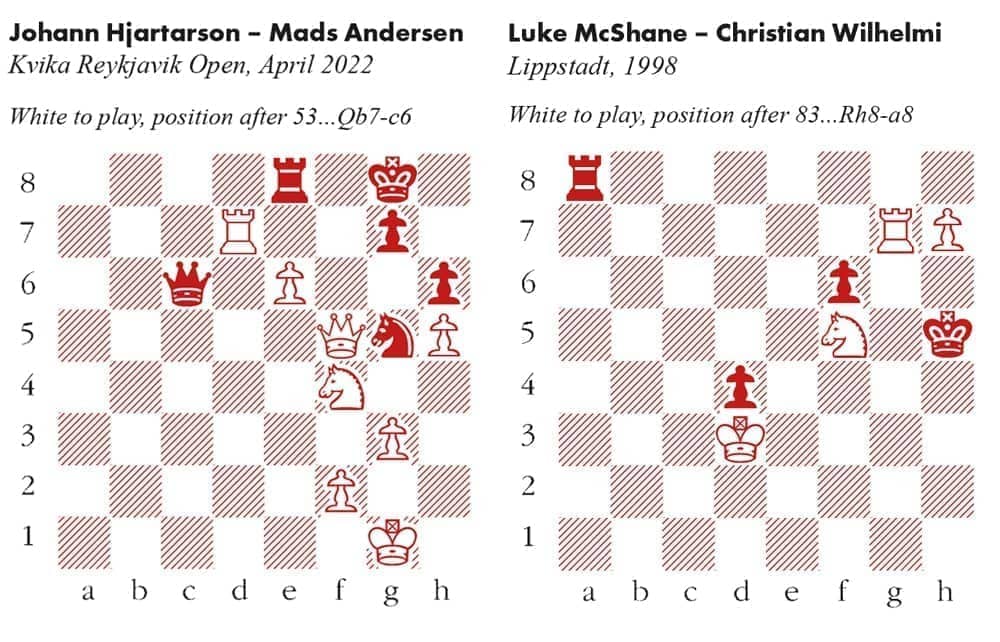In the dying seconds of an online blitz game, I promoted a pawn and instantly regretted it. There was nothing wrong with the move, but the extra second spent on choosing and clicking the queen was more than I could spare. A few flailing moves later, my time ran out. Of course, I had forgotten to switch on ‘Always Queen’, a handy setting offered by all decent chess websites. Some 99 per cent of the time, a queen is what you want.
But just occasionally, a knight, rook or bishop is superior. A knight may land with check, where a queen does not. To see a rook or bishop trump a queen is rarer still, as neither piece has any obvious point in its favour. But it can happen in scenarios where a queen would stalemate the opponent, but a lesser piece would not. If so, a rook usually hits the sweet spot – competent, but not overqualified.
Johann Hjartarson – Mads Andersen
Kvika Reykjavik Open, April 2022
Rarer still is a bishop promotion, which could have arisen in this game from the Reykjavik Open. The Icelandic grandmaster playing White advanced his pawn to e7, and the game was eventually drawn. There was a spectacular win to be had with 54 Qf7+!, though after 54…Nxf7 55 exf7+ Kh7. (Not 55…Kf8 56 Ng6+.) Now White must choose carefully: 56 fxe8=Q (or rook) allows a brilliant counterstroke: 56…Qh1+ which leads to stalemate. 56 fxe8=N allows 56..Qxd7. The move White needs is 56 fxe8=B! which defends the rook, so White wins quickly, e.g. 56…Qb6 57 Bg6+ Kg8 58 Re7 followed by Re8+.
Situations which call for a bishop are rare as hen’s teeth, but I encountered one as a teenager. In the diagram position, my opponent had just played 83… Rh8-a8. I was fearful of capturing the pawn, as 84 Kxd4 Ra4+ sets up a ‘crazy rook’ defence, e.g. 85 Kc3 Rc4+ 86 Kd3 Rc3+ and the rook is immune, on pain of stalemate. (My head wasn’t cool enough to see that my king could still find safety, e.g. 85 Kd5 followed by Ke6-f7 and Nf5-e7 would lift the stalemate.)
Luke McShane – Christian Wilhelmi
Lippstadt, 1998
So, I went for 84 Rg8, seeing that 84…Ra3+ 85 Ke4 easily escapes the checks. I knew that after 84…Rxg8, promoting to a queen or rook would lead to a dreaded stalemate, but 85 hxg8=B soon brought about an endgame with king, bishop and knight against king. That’s a win, if you’ve done your homework properly. I knew the gist, flubbed it, and somehow won anyway.
Curiously, 85 hxg8=N leads to an even more esoteric endgame, which also happens to be a win, in theory. King and two knights cannot force mate against a bare king. But when the defender has a blockaded pawn, a win is sometimes possible. Imagine White: Kb6, Nd6, Nf5; Black: Kb8, pawn f6. White wins with 1 Ne7 f5 2 Nc6+ Ka8 3 Nb5 f4 4 Nc7#






Comments